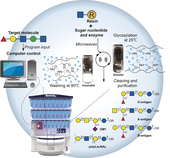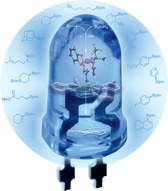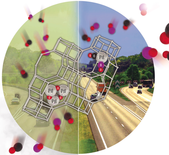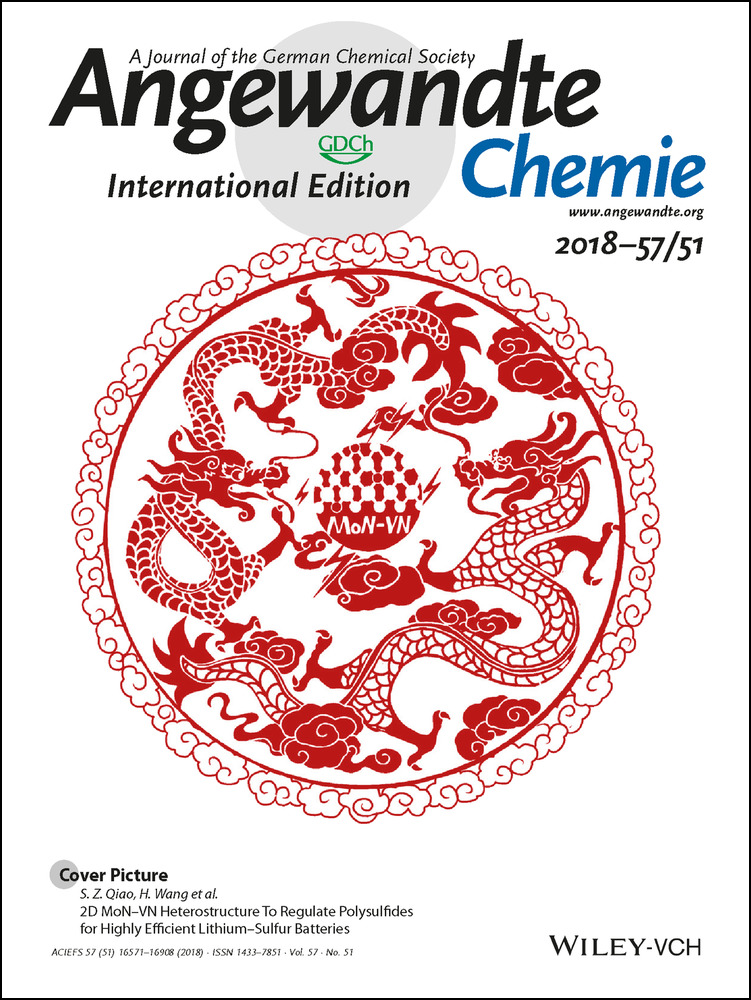Cover Picture: 2D MoN-VN Heterostructure To Regulate Polysulfides for Highly Efficient Lithium-Sulfur Batteries (Angew. Chem. Int. Ed. 51/2018)
Graphical Abstract
A 2D MoB–VN heterostructure was fabricated as a model sulfur host in lithium–sulfur batteries for improved regulation of polysulfides and sulfur utilization. As demonstrated by H. Wang, S.-Z. Qiao et al. in their Communication on page 16703 ff., superior rate and cycling performance compared with a 2D single-component MoN were achieved. Incorporation of V in the heterostructure can be used to tailor the electronic structure to enhance polysulfide adsorption.
A 2D MoB–VN heterostructure was fabricated as a model sulfur host in lithium–sulfur batteries for improved regulation of polysulfides and sulfur utilization. As demonstrated by H. Wang, S.-Z. Qiao et al. in their Communication on page 16703 ff., superior rate and cycling performance compared with a 2D single-component MoN were achieved. Incorporation of V in the heterostructure can be used to tailor the electronic structure to enhance polysulfide adsorption.
Automated Synthesis
Boronic Esters
Zeolites








